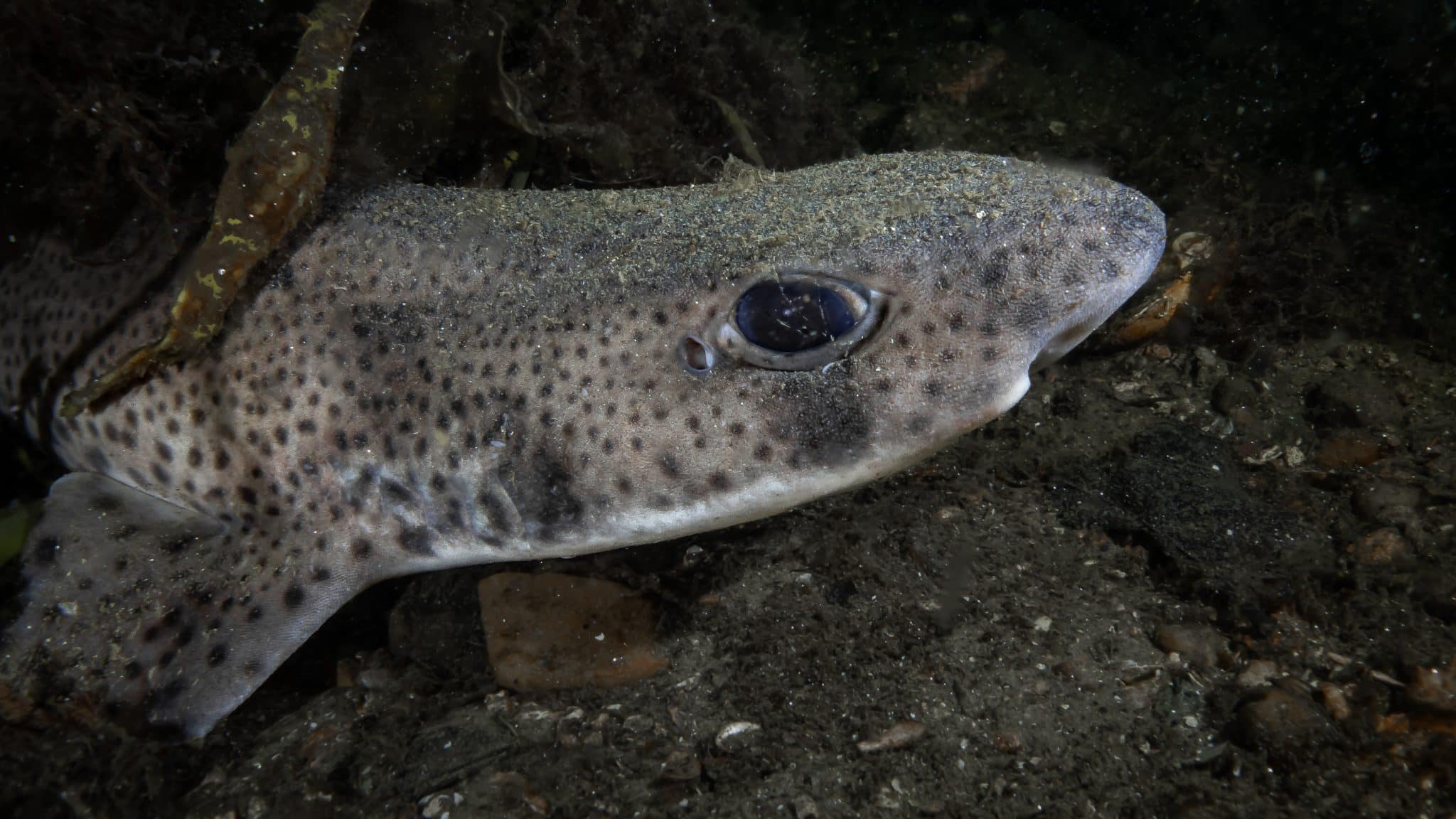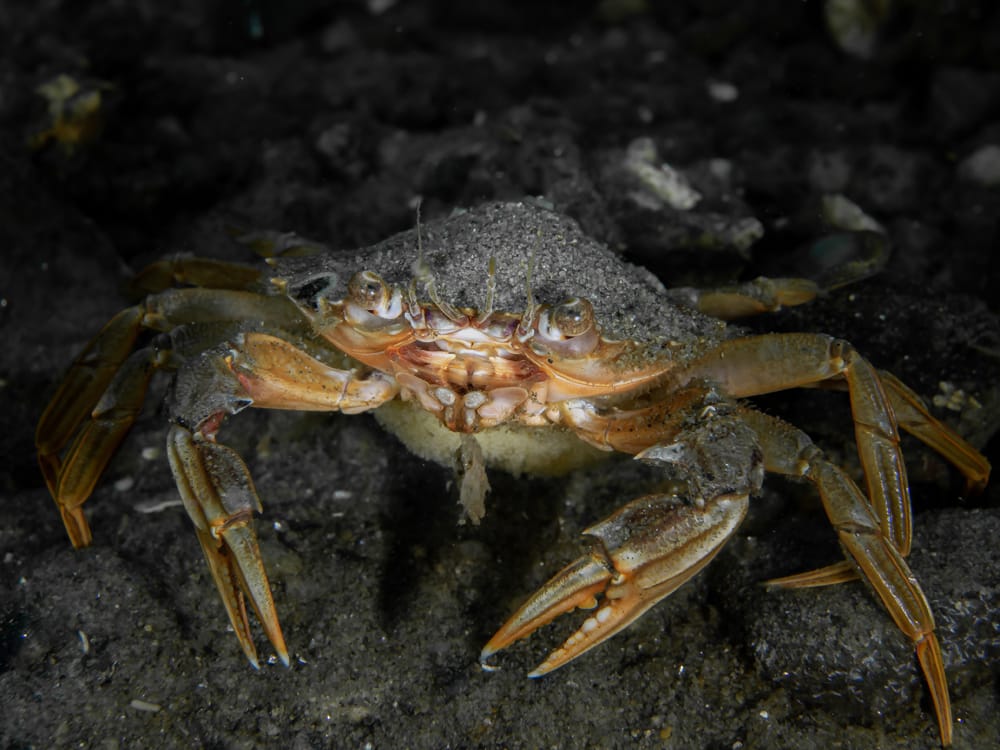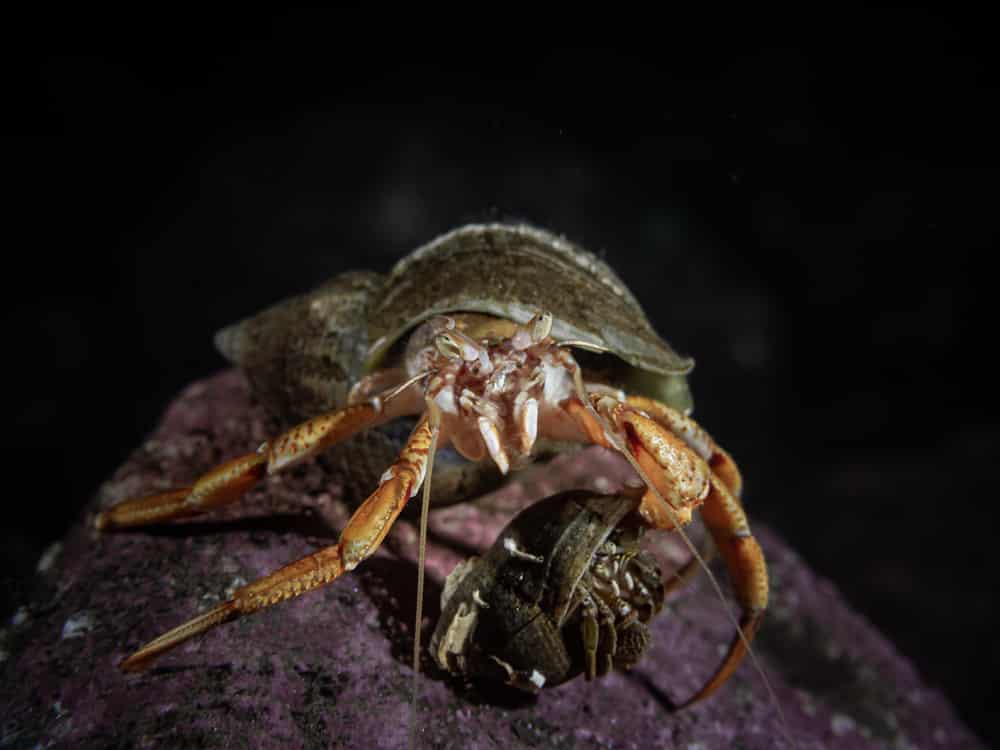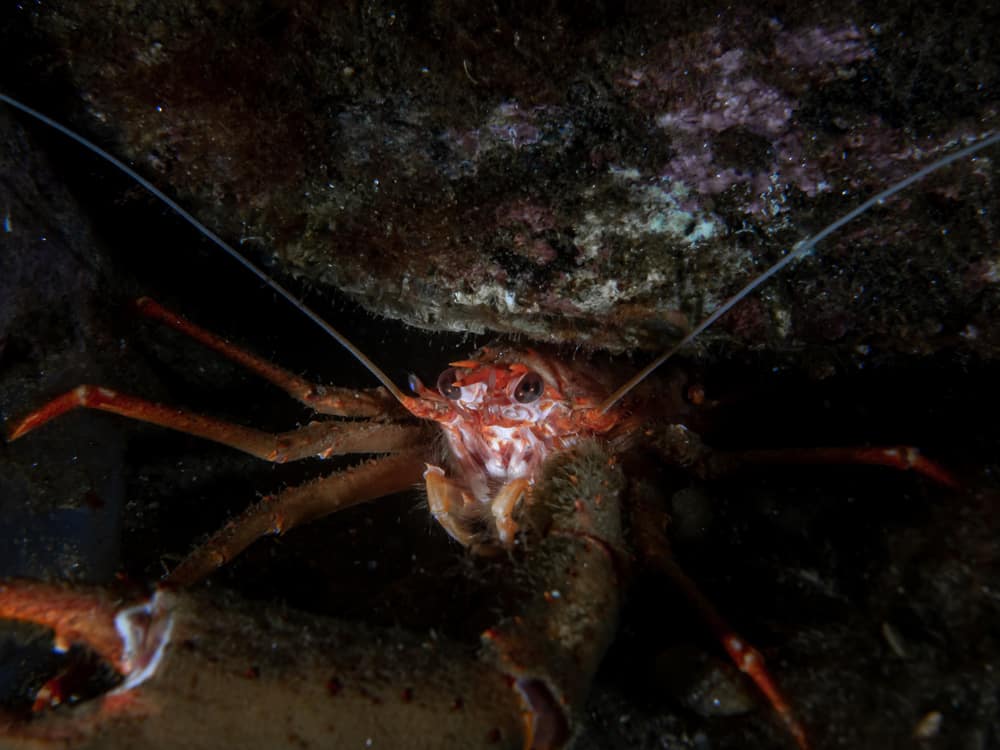News
Scotland Underwater: St Cats, Loch Fyne

The next in a series of blogs about Scotland Underwater from Ross Mclaren…
Loch Fyne on Scotland’s west coast is a sea loch probably most well-known for the incredible sea food that comes from it and is sold across the UK and Europe. At 70km long and with a maximum depth of around 200m, it’s also Scotland’s longest sea loch, which means… plenty of opportunity for diving.
Although maybe just pipped to the title of “Most Dived Loch in Scotland” by Loch Long just to the east, Loch Fyne is an ever-popular destination for divers throughout the country and even the UK. She may be slightly further away from the central belt and Glasgow than Loch Long, but it’s more than worth it.
Coming from Glasgow, you actually drive around the head of Loch Long, down her west bank under the shadow impressive Arrochar Alps before continuing to follow the A83 into the unbelievable Glen Croe. The views alone from the Rest and Be Thankful at the top of the Glen looking back on the road you’ve taken is worth the extra drive.
With twenty-two dives sites in the Loch (according to Finstrokes), I won’t even pretend I’ve dived them all, there is more than enough to whet the appetite of any and all divers.
Aside from Finnart (or A-Frames) on Loch Long, I don’t think there is another dive site in Scotland as popular as St Cats, on Finstrokes it’s listed as Seal Reef and some also call it St Catherines. The name might be up for discussion, but its popularity is most definitely not and once you’ve taken a wee dook underwater it’s easy to see why. With plenty of parking, and a pretty easy entry and exit point, it can be really busy during the summer months… but sadly, not just with divers! The good old Scottish midge also appears to very much appreciate the site as well and enjoys a wee buffet courtesy a la diver… you have been warned! However, the site is well worth braving our wee pests.
Now there’s two ways to dive St Cats. The “main” dive is straight forward to be honest. Once you’ve dropped beneath the surface head directly out from the shore you come to a “drop off”. It’s not a cliff per-say, but it’s a pretty obvious slope. At this point head down to around 8 to 10m and simply turn right keeping the incline on your right-hand side. This isn’t the main part of the dive, but don’t rush too fast, keep an eye out here for the odd dogfish hanging around the slope. Keep finning at about 10m and eventually you pick up the rocky reef. From this point it is totally up to yourself as to your depth. If you’re looking for a shallower dive simply keep swimming across the reef and take as long as you like looking under all the rocks, there’s plenty of life to find.
Now, I make no promises here, but the last few dive days we’ve had here has rewarded us with an absolutely magnificent lobster at the far side of the reef. Best way to find it would be to head down edge of the rocks once you first hit them to about 16 to 18m. At this point, swim straight across the reef until you come to the end of the boulders. There should be a rather large rock, with another propped up against it, and on the far side of it, at the bottom the home of Mr Lobster. But, be careful, the claws are big. If you’ve not found it by swimming straight across simply swim up and down the far side edge of the boulders and it shouldn’t be too hard to spot.
Personally, I always tend to follow the edge of the rocks down to steel wire which stretches right across the reef at about 16 to 20m, I’ve no idea what it’s from, but it makes for a really good navigation point during the dive. Most people tend to use this as the start of their zig zag exploration of the reef, but if you are looking for depth swim over the top of the wire and continue to follow the rocks down to your chosen depth. I’ve only ever been to around 40m, and although there isn’t much in the way of life, there has been fireworks anemone found at depth and even the odd cuttlefish/bobtail squid. I’m not going to lie; this is the one and only time I’ve seen one during a dive and being around 37m at the time I did wonder if I was narked. I still like a wee look down deeper just on the off chance I come across it again… cause you know, obviously it hasn’t moved in the past year or so… one can dream.
Regardless of the depth you chose the dive itself is the same. Simply zig zag your way back up the reef taking your time. The rocks are absolutely teeming in life and there’s very often the odd lobster hiding away. Once you’re done exploring simply head back to the edge of the reef, now keeping the slope on your left at about 10m again and the fin back for about the same time it took you to reach the boulders and your back to the entry point. It’s as easy as that!
Now, if you are looking for something a wee bit different there is actually a “wreck” of a speed boat in the opposite direction to the reef. Many people will give compass bearings etc. to reach it, but I’ve found the easiest way to find it is to simply swim straight out and down from the entry point and head to around 18 to 22m. From here turn left keeping the slope on your left-hand side. Have your buddy swim at around 17m and you at about 21m (if visibility allows for it) and simply start finning until you come across it. Depending on your fin strokes, you should hit the wreck after about 4 to 7mins. The detour from the “main” dive to visit the speedboat is well worth it. The “wreck” is pretty much intact, though the seats seem to have miraculously detached themselves, and is now home to scores of squat lobsters, anemones and at one time a rather large “Ling”. Sadly, at some point over the last year or so, we think, someone has used the boat as practice for lift bags and actually turned the whole thing 1800 and in the process it would appear they’ve scared off the ling, which I’ll be honest is rather infuriating! My suggestion for taking in the speedboat is to do this first, once you’re finished exploring the “wreck”, head up the slope to a shallower depth and then head back along it keeping it on your right hand side. This will take you back to the entrance, however if gas/dive plan allows you can continue along to the “main” reef and do a slightly shallower zig zag checking out the boulders once again.
St Cats/Seal Reef/St Catherine’s is probably overlooked by many of us divers who regularly dive the sea lochs. We can be guilty of passing it off as just a “good training site”. But, it does offer a lot for most divers and in fact, with it’s nice little beach and secluded parking off of the main road, also makes it good for non-diving friends and family as well. It’s often used by local clubs and groups as a small campsite for those who fancy spending the weekend.
For more from Ross, follow him on Instagram @underwater.ross and on Twitter @outdoorsross.
News
Book Review: Fire on Monroe Bravo by Fred Lockwood

Fire on Monroe Bravo is the latest book in the Jack Collier series by Fred Lockwood. Our story begins with our lead characters, Jack and Sandro, owners of Marine Salvage & Investigation Company, arriving on the Monroe Bravo Oil & Gas Platform in the North Sea. Having secured a contract for their vessel the MV Stavanger to act as support ship to the platform for TransGlobal Oil, our protagonists are on a celebratory visit.
However almost as soon as they arrive a series of explosions rock the platform, causing huge damage, loss of life and the very real danger of a massive human, ecological and financial disaster.

As the danger mounts for both our heroes and the surviving workers, Jack and Sandro will have to escape the inferno, all while trying to save the platform and the men still trapped unable to help themselves.
The disaster sets the scene for the unfolding story lines following the fate of the platform and our main characters, the police investigation into a suspected terrorist act and the actions of TransGlobal Oil as they attempt to navigate the pubic outcry and financial repercussions.
In his eighth book, Fire on Monroe Bravo, Fred Lockwood delivers an explosive thriller, with plenty of above and in-water drama, and our heroes fighting for survival, what more can you ask for?
We thoroughly recommend this read and look forward to the next in the series. For more information about his book series, you can check out the reviews of his previous books here on Scubaverse.
- Title: Fire On Monroe Bravo
- Author: Fred Lockwood
- ISBN: 979-8325324536
Available in a paperback version and for Kindle from Amazon and book stores.
Blogs
Alonissos: The complete diving destination (Part 1)

In June we were incredibly fortunate to be invited to dive in Alonissos, a small Greek Island in the Sporades island chain located in the North Aegean Sea. While I have long been a big fan of the Greek Islands as a great holiday destination, I had not had the opportunity to do any diving on previous visits and Mike and I were extremely excited to see what Alonissos had to offer both above and below the surface!

The Sporades are easily accessible via the airport in Skiathos (the first island in the chain), which is served by Jet2 flights from all major UK airports from May through October. Numerous ferries and charter boats make island hopping from Skiathos Town a breeze. After an hour boat ride, the picturesque port of Patitiri was a wonderful introduction to Alonissos, where we were met by our gracious hosts Kostas of Albedo Travel and Dias of Alonissos Triton Dive Center. Mike and I were delighted to be staying at the Paradise Hotel, aptly named for its stunning views over the sea and great location for walking to the waterfront.

Alonissos is beautifully situated in the National Marine Park of Alonissos and the Northern Sporades, the largest marine protected area in Europe. The surrounding seas offer fabulous marine life, including incredibly rare species such as the Mediterranean monk seal. They boast deep walls covered in gorgonians and sponges, stunning topography with caverns, swimthroughs and pinnacles, and the first accessible ancient shipwreck from 500BC!

In locations where historical sites have been reported, the waters are largely restricted, but with collaboration between government, underwater archeologists and dive centres, incredible underwater museums are being created for a truly unique diving experience. Alonissos is home to the first of these, the Ancient Shipwreck of Peristera Accessible Underwater Archeological Site. The chance to dive into history (along with reports of healthy reef life and amazing underwater topography) meant Mike and I were keen to get in the water.

Our introduction to the diving around Alonissos was at the Agios Georgios Pinnacles, in the channel between Alonissos and Skopelos. This fantastic site was named “The Chimney,’ and proved to have a huge amount to see. We got to a decent depth here (over 25m), and marvelled at a colourful reef wall with a wonderful swim through whose rocky walls were absolutely covered with life. As well as brilliant topography there was no shortage of macro life here. We saw numerous nudibranchs, five different species in total. The second dive at Mourtias reef nearby was a shallower dive along a nice wall with lots of crevices. Several moray eels and grouper called this site home. We enjoyed looking in the crevices for lobster and smaller benthic life, such as cup corals and tunicates.

Our itinerary allowed us two dives a day with afternoons left to explore the island with our hire car and evenings to enjoy the famous Greek hospitality. This proved to be a lovely mix of in-water and land based diversions.

The next days diving to the Gorgonian Gardens and Triton’s Cave was to be even better! These two stunning sites are nothing short of fabulous. The Gorgonian Gardens was a deep wall near to the Agios Georgios islands. The ever-present currents in this deep channel meant that the sea life was amazing … the namesake Gorgonian sea fans dotted the wall at a depth of 30 to 50 meters, getting ever larger the deeper we went. Above 30m was by no means less beautiful, with sponges, corals, scorpionfish, moray eels and some rare and colourful nudibranchs.

The second shallower dive of the day was to Triton’s Cave or the Cavern of Skopelos, on the east side of that island. The spectacular rock formations had wild striations both above and below the water making a truly epic topography. The cavern entrance was at 14m, and big enough for a buddy pair, winding up to 6m and passing two beautiful windows out into the blue. Emerging from the cavern, the light at the shallower depths and the incredible rock formations made for a fantastic gentle swimming safety stop and we all surfaced by the boat with massive grins.

Check out our next blog :Alonissos: The complete diving destination (Part 2)” to hear about our amazing dive on the 2500 year old Peristera Wreck!
Thanks to:
Alonissos Triton Dive Center https://bestdivingingreece.com/
Albedo Travel https://alonissosholidays.com/activities/
Paradise Hotel https://paradise-hotel.gr/
Alonissos Municipality https://alonissos.gr/en/
-

 Blogs2 months ago
Blogs2 months agoDiving With… Nico, Ocean Earth Travels, Indonesia
-

 News1 month ago
News1 month agoMurex Bangka Announce New Oceanfront Cottages & Beachfront Dining
-

 Blogs2 months ago
Blogs2 months agoA new idea in freediving from RAID
-

 Marine Life & Conservation1 month ago
Marine Life & Conservation1 month agoIceland issue millionaire whale hunter a licence to murder 128 vulnerable fin whales
-

 Marine Life & Conservation2 months ago
Marine Life & Conservation2 months agoThe Shark Trust Great Shark Snapshot is back
-

 News3 months ago
News3 months agoCharting New Waters; NovoScuba Goes Global with the Launch of their Revolutionary Dive Training Agency!
-

 Gear News1 month ago
Gear News1 month agoNew Suunto Ocean – a dive computer and GPS sports watch in one for adventures below and above the surface
-

 Marine Life & Conservation Blogs2 months ago
Marine Life & Conservation Blogs2 months agoBook Review: Plankton





















